Features of pruning climbing roses for the winter
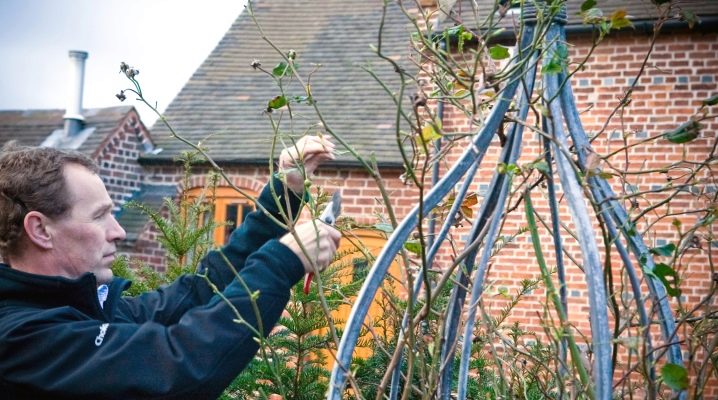
Climbing roses with abundant continuous flowering are irreplaceable plants for vertical landscape gardening. Curly varieties are used to create living decorative columns, pyramids, arches and trellises, decorate with their help small architectural forms, drape walls of houses, balconies, gazebos and fences. The reason for their popularity lies in their exceptional decorativeness, the ability to bloom magnificently all season and the simplicity of their content. But one operation to care for liana-like flowers is often the subject of heated discussion and controversy in rose communities. We are talking about autumn pruning and the need to thin out rose bushes before wintering.
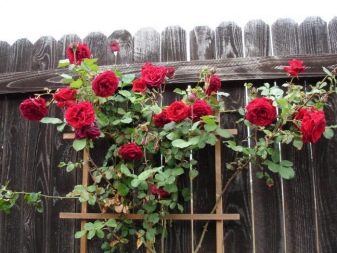
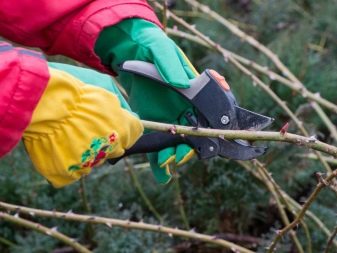
Meaning and purpose
There are several ways to prune climbing roses, differing in purpose and timing. In the spring, rejuvenating and sanitary pruning of the bushes is carried out, in the summer - decorative, encouraging plants to bloom abundantly, and in the fall - prophylactic. Novice gardeners sometimes consider the autumn pruning of climbing roses, whose main value is the flexibility and branchiness of the shoots, an absolutely pointless exercise. This approach to growing this type of rose leads to a thickening of the plantings, when the climbing rose turns into uncontrolled thorny thickets.

Insufficient intake of sunlight inside the bushes provokes a stop in the growth of the middle shoots and the active production of lateral peripheral lashes by the plant. All this leads to a loss of attractiveness and a violation of the flowering schedule of climbing roses, both to its temporary delay and to its complete cessation.
Annual autumn thinning ensures their intensive growth, stable rich flowering and solves other important tasks:
- rejuvenates planting in an accelerated mode - with the timely replacement of old lashes with fresh shoots, rose bushes not only live longer, but also become more productive;
- heals roses - due to the removal of infected, damaged, unripe lashes, the winter hardiness of the bushes and their resistance to diseases increase;
- helps maintain good looks - when pruning, the desired growth vector of shoots is set, due to which the crown acquires a harmonious pictorial form, reaching maximum decorativeness;
- provides uniform access of air and sunlight to all parts of the plants. Due to the limited air permeability of the crown, the risk of developing black spot, rust, powdery mildew increases;
- improves plant nutrient supply due to their rational distribution;
- prolongs the flowering phase, increases the number of pedicels, promotes the enlargement of flower buds, encourages the growth of vegetative mass;
- facilitates the fight against harmful insects;
- acts as a preventive measure against diseases of fungal and bacterial etiology;
- simplifies the construction of shelters for the winter - bushes with shortened branches and a thinned crown are easier to wrap up than heavily overgrown thickets.

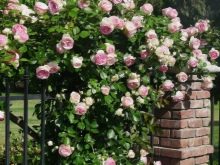
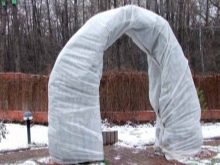
Clipping schemes
The success of growing climbing roses depends largely on proper pruning. Some varieties are easy to care for, they are pruned according to the general scheme, rejoicing in abundant flowering throughout the season.But there are also many capricious varieties, the peculiarity of which is a single flowering on biennial shoots. And inexperienced growers, due to strong annual pruning, are never able to get the desired flowering of such forms.
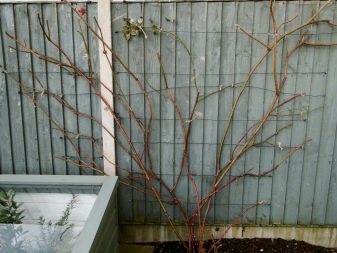
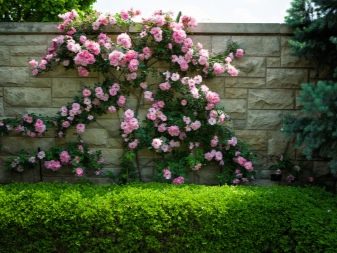
There are several fall pruning techniques.
- Light (long) - in this case, only the tops of the lashes are cut off, leaving up to 10 “eyes” (growth buds) intact. The method is suitable for ground cover varieties or elite forms (Bengali, English, old).
- Moderate - this option involves cutting the stems in half. It is used by those who grow hybrid tea roses.
- Strong (short) - the most radical pruning with the removal after flowering of all shoots under the root, to the place where the dormant buds are located. With its help, hybrid tea varieties and branching forms are put in order.
- Combined - superficial cut combined with radical short. In this way, mainly floribunda rose varieties are pruned.
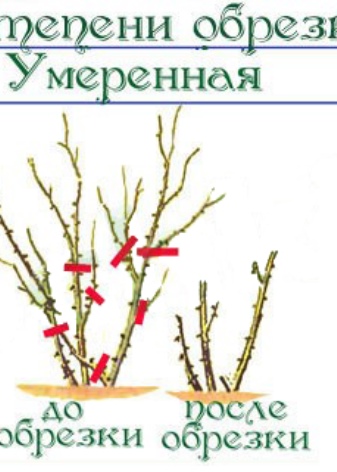
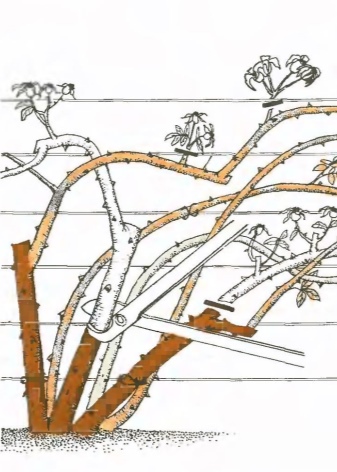
Required inventory
For work you will need:
- a power-driven pruner is an optimal solution, since it is more difficult to achieve perfect cut evenness using a garden knife, even a well-sharpened one;
- garden saw or lopper for removing old thick-stemmed branches;
- scissors for pruning thin faded flowers;
- tightly coated gloves as protection against thorns;
- rake for collecting waste after trimming.
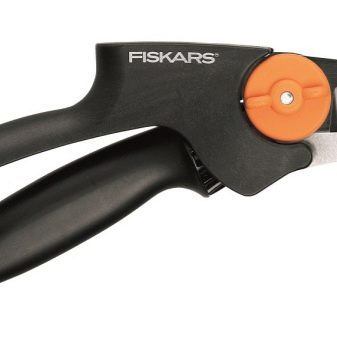
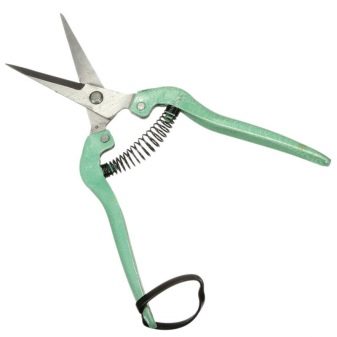



Before proceeding to pruning the bushes, it is imperative that the instruments are disinfected by fire sterilization or treatment in any disinfectant (alcohol, peroxide, chlorine, 10% potassium permanganate solution). The procedure must be repeated after thinning each plant.

Timing
There are no clear indications regarding the timing of the autumn pruning of climbing roses, since they depend on the climatic and weather conditions of a particular area. It is recommended to start it when a negative daytime temperature is established within the range of -1 ... -3 ° C, which in the regions of the central European part of Russia falls on the end of October. Failure to comply with this condition is fraught with various negative consequences.
Carrying out this operation earlier, when there is still a stable plus on the street, provokes the development of kidneys and, as a result, their death due to night frosts. With the arrival of spring, such branches, thawing, turn into potential sources of infection, so they create a favorable environment for the vital activity of pathogenic microorganisms.
The pruning date is also planned, taking into account the meteorological forecast for a period of 10-14 days, so that the plant has enough time to adapt to the cold weather.
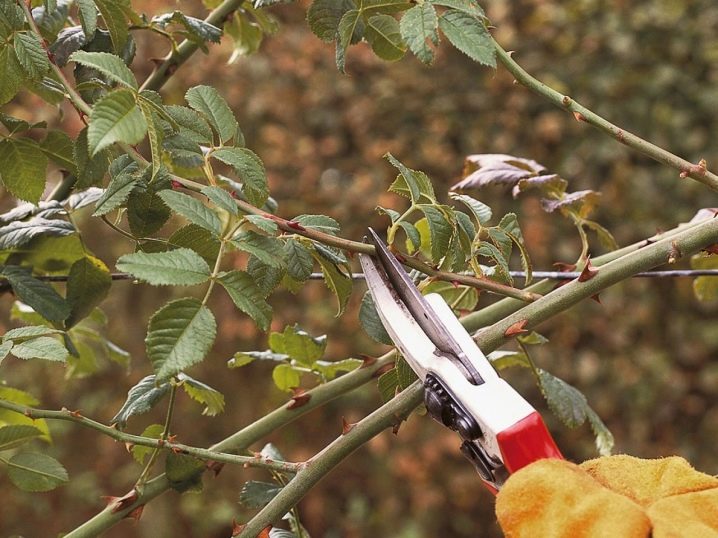
General rules
Preparation for pruning begins in advance. In August, the plants cease to be fed with nitrogen-containing fats, since they reduce the frost resistance of plants and provoke the growth of "young" stems, which are unlikely to survive in winter. From this moment, roses are fertilized with phosphorus-potassium complexes or formulations are used where F and K are contained separately. They are good for roots, help wood ripen, and increase immune defenses and bud formation. Of phosphorus fertilizers, rose growers most often use simple or double superphosphate, and of potassium fertilizers, potassium sulfate.

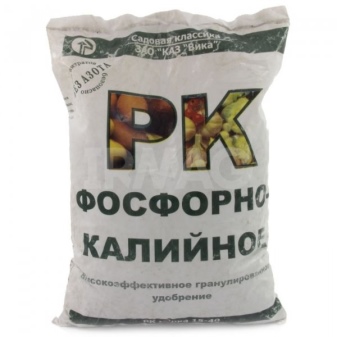
What beginner rose growers need to know.
- All manipulations are carried out only with a high-quality sharpened, sterile instrument in order to exclude infection and obtain sections with torn, rather than even, edges.
- It is necessary to cut off the stems over the swollen, not yet sprouted buds, retreating a distance of at least 0.5 cm, but it should not be exceeded by more than 1 cm.
- Trimming is done at a 45-degree angle.
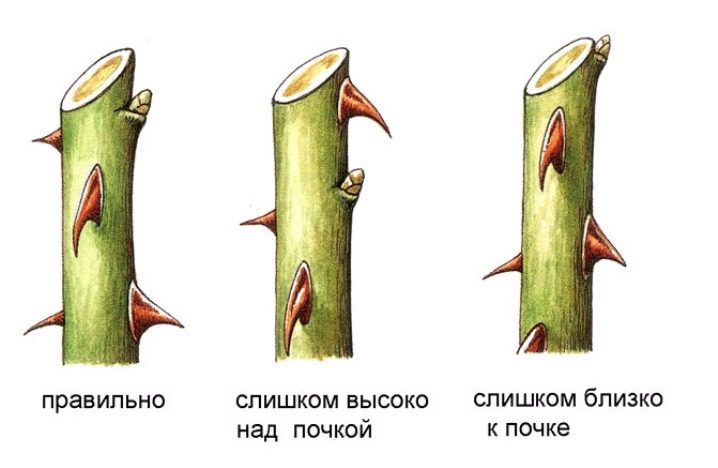
- The stems are cut to the outer buds to avoid intertwining branches, overgrowth and thickening of the middle of the bushes.
- Damaged, infected areas of the lashes are cut out along the white core with partial capture of the healthy part of the shoots.
- When removing old perennial stems, you cannot make a circular cut, leaving "hemp".
- When cleaning withering buds, it is correct to remove them from the crown of the stems to a healthy knot in front of the first five-leafed leaf.

- All waste after trimming must be disposed of by incineration.
- The procedure should be carried out on dry days with sunny weather.
- Do not neglect stimulating feeding at the end of the main thinning.
To process the cuts, first use brilliant green or the same manganese, and then, to heal - garden var.
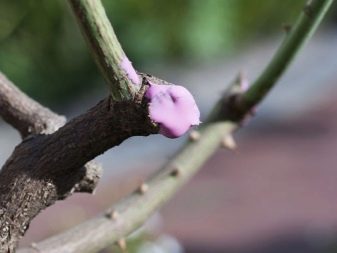
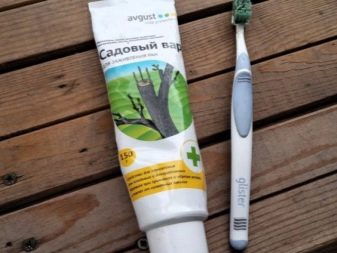
Differences in pruning by cultivar
The entire assortment of climbing roses is subdivided into several conditional groups according to two stable characteristics - this is the shape of the bush and the nature of flowering, in accordance with which the approach to pruning certain varieties will differ.
Depending on the frequency of flowering, varieties are distinguished.
- With one flowering during the season, for example, as true multi-flowered forms derived from the semi-evergreen memorial rose "Wichuraiana" ("Vihura"). In most cases, the flowering period lasts from June to July. Flowers cover last year's basal shoots in an amount of up to 10 pcs. One part of the shoots are one-year-old branches of the replacement type, the other are two-year branches, the flowering of which occurs in the current season. It is necessary to get rid of the basal (faded) stems and cut them clean in the fall to make room for the young that will appear with the arrival of spring.
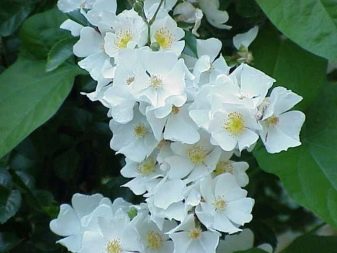
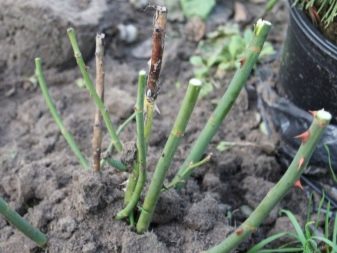
- With repeated flowering throughout the season. These varieties tend to bloom only in the second year of life and retain the ability to bloom profusely up to 4-5 years of age. They do not need annual thinning. Drying lashes are removed at the root as needed. Strong pruning is usually needed by adult four-year-old plants. The procedure is carried out in the spring, leaving up to 3 substitute one-year lashes and up to 7 main ones that can bloom on the pruning bush.
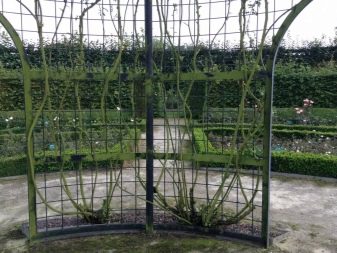
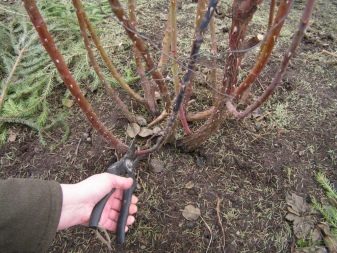
Depending on the shape of the bushes, such varieties are distinguished.
- Large-flowered roses Climber (Climber), which are characterized by repeated, abundant, prolonged flowering. Distinctive features of climbers are the presence of thick, strong, inflexible shoots 1.5-4 m long, the formation of large single or collected in huge inflorescences of flowers and a large number of shiny green leaves. Thick lashes are almost impossible to bend, so they are allowed to run over bars or around posts. Flowers are formed on the main strings. Climbers are left with 5-7 lashes, and the rest are disposed of. Popular forms: Paul Scarlet, New Dawn, Breath of Life, Golden Showers, Compassion, Michka. Many of them are distinguished by increased resistance to powdery mildew and grow well in the middle lane.
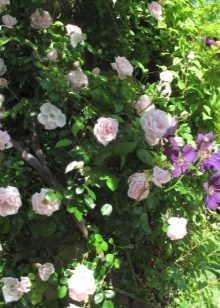
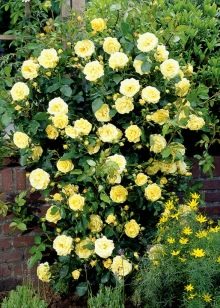
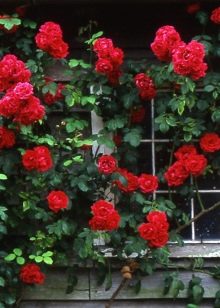
- Small-flowered curly roses Rambler (Rambler). In the case of free growth, they need a high support, without which they fall to the ground. Thanks to long, flexible, curly lashes, which grow to 8-10 m and roll up in rings, it is convenient to create living garden forms from ramblers, to braid garden arches, gazebos, pergolas with them. The shoots of the last year are covered with flowers. Long-leaved ramblers are left with a maximum of 5 skeletal branches, and the rest are cut off. Bushes with a lot of lashes are more difficult to cover for the winter. Forms: Crimson Rambler, Red Rambler, Mannington Move, Goldfinch, Utersen.

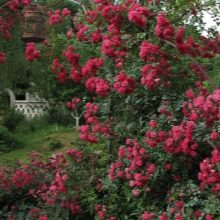
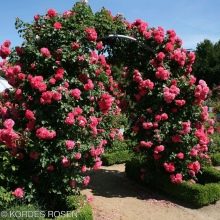
- Fast growing roses Climbing (Climbing) or, in other words, sports that have appeared due to kidney mutations. These large-flowered hybrids tend to grow at an accelerated rate and bear fruit later than representatives of other varieties. Such roses are bred mainly in regions with a mild climate, since it is difficult to achieve ripening of shoots and abundant flowering in the Moscow region and other regions of the Central European part of the Russian Federation.When pruning, it is important to take into account the correspondence of the length of the lashes to the height of the bush, but not to allow excessive shortening of the shoots, since growth is possible only on leafy branches. The best varieties: City of York, Gloria Day, Orange Triumph, Celillia Brunner.
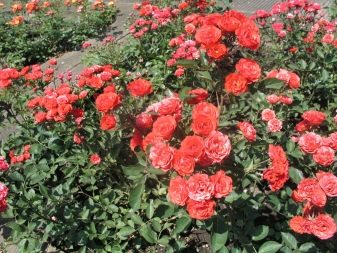
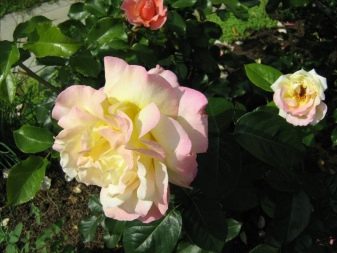
Follow-up care
How to hide flowers for the winter depends on the climatic characteristics of the growing area. In regions with mild winters, the stems of long-leaved forms of the climber type are bent to the surface of the ground and fixed with small staples. It is even more convenient with ramblers - their shoots are simply tied to the same support as the roses themselves. If necessary, they are additionally wrapped using a special covering material or with the help of spruce branches.
Low-growing varieties such as "Michka" climber covered with a cardboard box, and a layer of shavings, sawdust, peat, humus is poured on top. It is important to worry in advance about the possibility of an influx of fresh air inside such shelters so that the roses do not seduce. Straw, rotted leaves and tops should not be used as mulch. Plant remains attract small rodents, which build nests from them for the winter. For the same purpose, they are used by pests and their larvae.
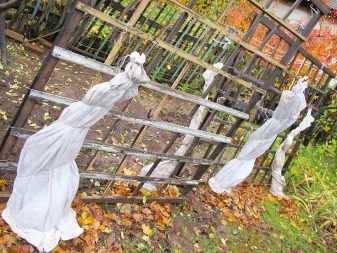
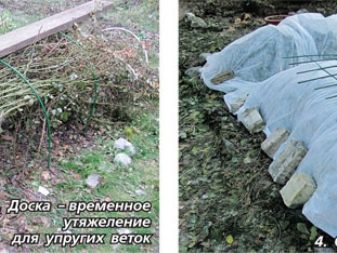
In regions with frosty winters, climbing roses are protected for the winter in several ways.
- Hilling. The lower part of the rose bush, no less than the root system, needs reliable insulation. To solve this problem, the plants are spud with earth, a soil mixture from soil with peat, a layer of sawdust, needles or organic matter (humus, compost) is poured into the near-stem circles. The material for hilling is selected based on the types of soil.
- In the form of a "dome". When constructing this multi-layer shelter, first a layer of insulation is laid, then spruce branches or old branches and at the end - a polyethylene film, which is fixed at the edges with scraps of metal profiles, bricks or just earth.
- With the help of covering structures. Arcs are bent from thick rods 70-90 cm long and overlapped over rose bushes. Insulation and polyethylene are placed on top.
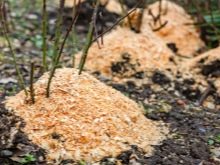
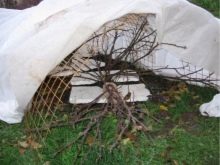
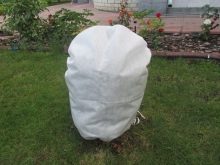
When climbing roses grow in rows, proceed as follows.
- Arcs are placed along the ridge with roses at the same distance.
- A trellis is tied to the arcs on each side, and the third is placed at the top as a stiffener. For this purpose, it is convenient to use wooden slats.
- The resulting frame is covered with a layer of heat insulator (roofing felt, rubberized material), and then - dense polyethylene, securely fixing the panels from the edges.
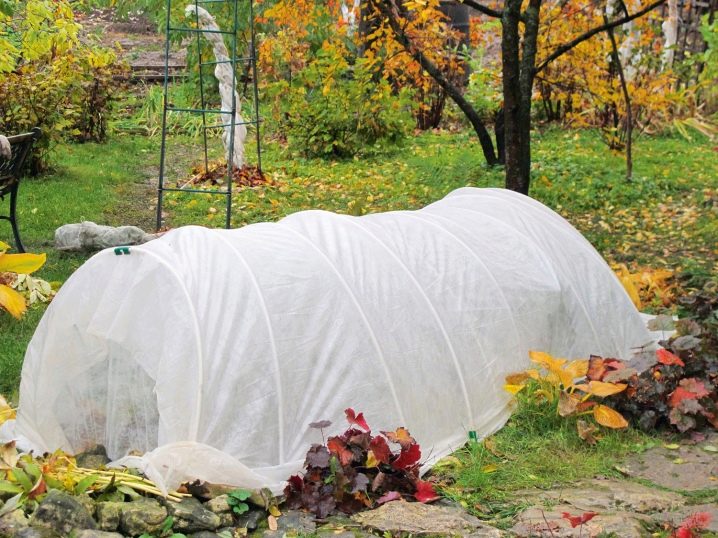
Such structures are convenient in that when it is necessary to ventilate the bushes, it will be enough to simply move the material at the end. Such a shelter is universally suitable for areas of the middle belt and the Urals.

Newbie mistakes
If for experienced rose growers climbing roses successfully winter, then those who only comprehend the art of growing these flowers do not always manage to preserve them until spring. In most cases, this is due to improper care of the rose bushes.
- Active growth of shoots in autumncaused by an overdose of plants with nitrogen-containing fats or mineral complexes. In the hope of achieving maximum decorativeness from green pets, rose growers begin to abuse feeding. This leads to intensive growth of the bushes, which continues with the onset of autumn.
- Unreasonably early pruning dates. Any thinning of the bushes has a stimulating effect, prompting the plant to form growth buds. It is important to wait until the subzero temperature is established, which will lead to a slowdown in sap flow and a suspension of the vegetative process.
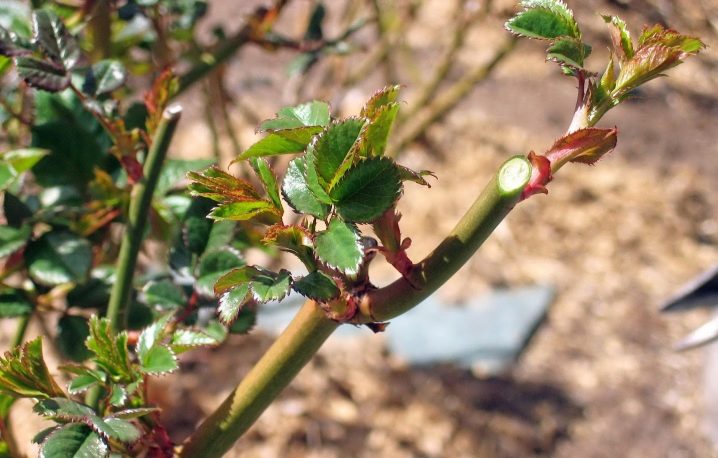
- Improper removal of dry inflorescences. To preserve decorativeness, climbing roses are shown partial harvesting of dried inflorescences when the season is just beginning. If you cleanse the bushes at the end of flowering, new flower buds may form.The plant will begin to spend energy and resources to provide them with food, will weaken and will not survive the cold.
- Improper foliage harvesting. In areas with wet winters, where temperatures are unstable and thaws are common, leaves should be completely removed. In wet foliage, pathogenic fungi that provoke rotting bushes feel good. If roses grow in regions with a mild climate, where there is no need to shelter bushes, it is permissible to leave foliage.
- Cutting abnormalities. This may be untimely processing of cut points or its absence at all. By neglecting this procedure after pruning, rose growers risk the health of the flowers, which at best can get sick and at worst die.
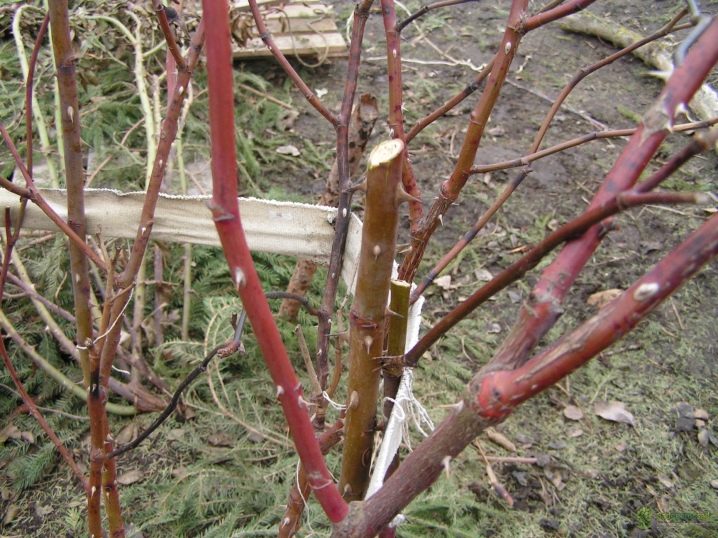
- Poor shelter. In most cases, the death of a climbing rose is not caused by exposure to low temperatures, but by the greenhouse effect inside improperly organized shelters. The bushes begin to rot, as a result of which mold fungi appear and actively spread on them. Thus, by spring, the plants are completely destroyed by these and other representatives of the pathogenic microflora.
For information on how to prune climbing climbing roses for the winter, see the next video.

































































































The comment was sent successfully.